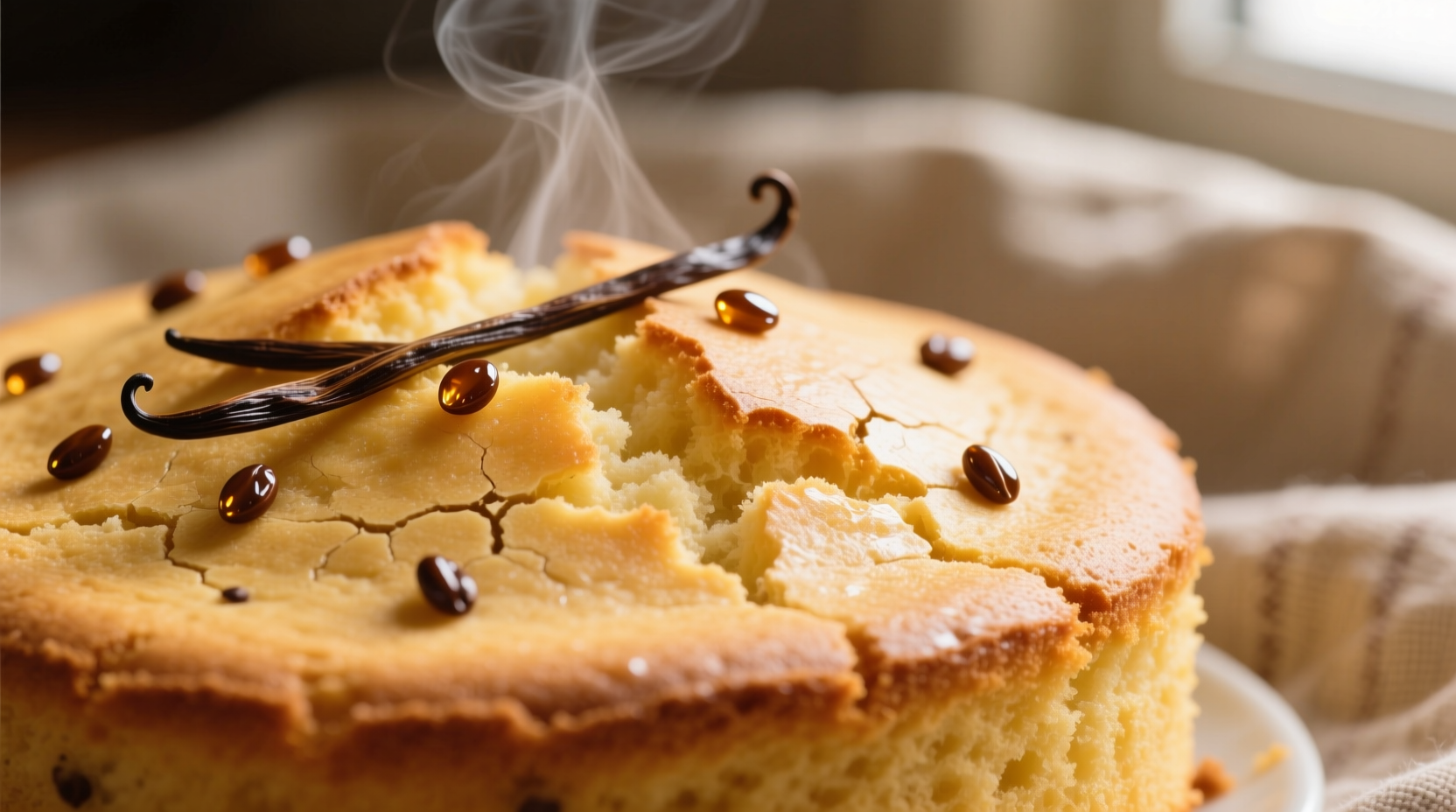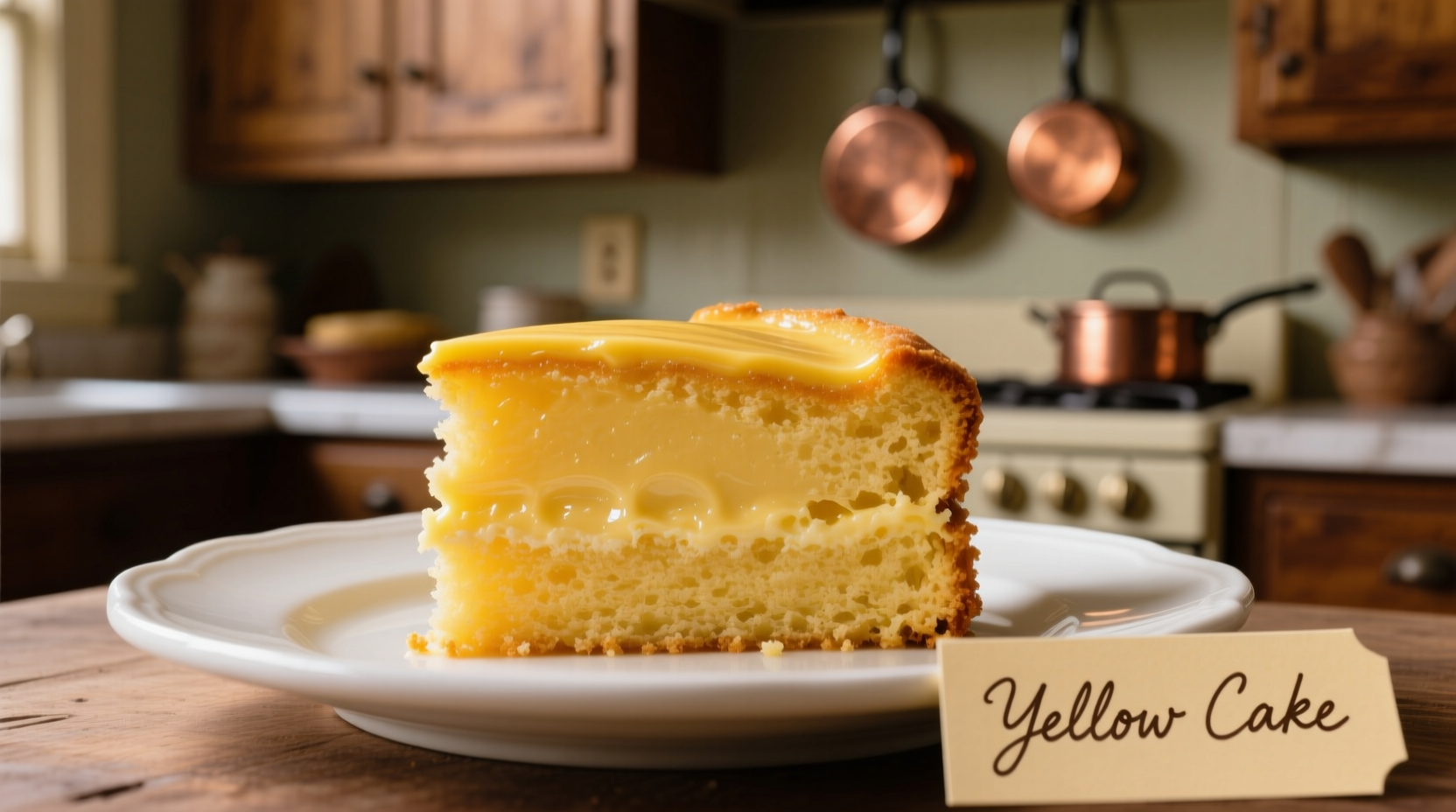Many home bakers mistakenly believe yellow cake has a specific "yellow" flavor, but the truth is simpler: it's a classic vanilla cake with a richer profile thanks to whole eggs. Understanding this distinction helps you achieve perfect results whether you're baking from scratch or adapting recipes.
Debunking the Yellow Cake Flavor Myth
The term "yellow cake" refers exclusively to its color, not a unique flavor profile. This common misconception leads many to search for special "yellow cake flavor" ingredients that don't actually exist. Professional bakers know that the golden hue and distinctive taste come from traditional ingredients working in harmony:
- Egg yolks provide both color and a subtle richness
- Vanilla extract delivers the primary flavor note
- Butter contributes to the moist, tender crumb
- Sugar caramelizes during baking, enhancing complexity
When food scientists analyze yellow cake's flavor compounds, they consistently identify vanillin as the dominant aromatic compound, confirming its fundamental identity as a vanilla cake variant.
Yellow Cake vs. Similar Varieties: A Flavor Comparison
Understanding how yellow cake differs from related varieties helps clarify its true flavor profile. This comparison reveals why confusion about "yellow flavor" persists:
| Cake Type | Primary Flavor | Key Ingredients | Texture Profile |
|---|---|---|---|
| Yellow Cake | Vanilla with buttery richness | Whole eggs, butter, vanilla | Moist, tender with slight density |
| White Cake | Clean vanilla | Egg whites only, shortening or butter | Lighter, fluffier, less rich |
| Golden Cake | Buttery vanilla | Egg yolks emphasized, butter | Richer than yellow, denser crumb |
| Vanilla Cake | Pronounced vanilla | Vanilla extract or beans, various fats | Varies by recipe foundation |
The Evolution of Yellow Cake Recipes
Yellow cake's flavor profile has evolved significantly since its emergence in American baking. Understanding this timeline explains why confusion about its flavor persists:
- Early 1900s: The first "yellow cake" recipes appeared in community cookbooks, distinguished by using whole eggs instead of just whites. These early versions relied on natural egg yolk coloration without artificial dyes.
- 1930s-1940s: With the rise of boxed cake mixes, manufacturers standardized the yellow cake formula using egg yolks for color and vanilla for flavor. Betty Crocker's 1947 recipe established the modern template.
- 1950s-1970s: As food science advanced, bakeries began adding small amounts of turmeric or annatto for consistent color, though the flavor remained fundamentally vanilla-based.
- 1980s-Present: Health trends led to reduced-fat versions that often compromised flavor, creating inconsistent yellow cake experiences that confused consumers about the authentic profile.
According to the USDA Food Composition Database, traditional yellow cake contains approximately 1.5 times more fat-soluble flavor compounds than white cake due to the egg yolks, explaining its richer sensory experience.
Creating Authentic Yellow Cake Flavor at Home
Professional bakers achieve the perfect yellow cake flavor through specific techniques that home cooks can easily replicate. The key lies in understanding how ingredients interact:
Egg technique matters most: Room temperature whole eggs incorporate more air during creaming, enhancing both texture and flavor release. The yolks' lecithin emulsifies ingredients, creating a more cohesive flavor delivery system.
Vanilla selection impacts results: While pure vanilla extract works well, adding a small amount of vanilla bean paste provides visible specks and deeper flavor complexity. For special occasions, try infusing your sugar with vanilla beans for 24 hours before baking.
Fat choice affects richness: Butter provides superior flavor but shortening creates a more tender crumb. Many professional recipes use a 50/50 blend to balance these qualities. When using butter, brown it first for a subtle nutty enhancement that complements the vanilla.

When Yellow Cake Flavor Might Differ
While traditional yellow cake is vanilla-based, certain contexts create variations you should understand:
- Regional adaptations: In Southern baking traditions, yellow cake sometimes includes a hint of almond extract for complexity, while Midwest versions might emphasize buttermilk for tang.
- Commercial variations: Some bakeries create "specialty yellow cakes" with added flavors like lemon zest or coconut, but these are deviations from the standard profile.
- Dietary adaptations: Gluten-free yellow cake recipes often require additional binders that can mute the vanilla flavor, requiring increased extract to maintain balance.
- Cultural interpretations: In Caribbean baking, yellow cake sometimes incorporates nutmeg or allspice, reflecting local flavor preferences while maintaining the golden color.
Research from the American Association of Cereal Chemists confirms that even with these variations, the fundamental flavor profile remains anchored in vanilla, with supporting notes from the egg yolk richness.
Practical Baking Tips for Perfect Flavor
Apply these professional techniques to ensure your yellow cake delivers the classic flavor profile:
- Cream properly: Beat butter and sugar for 5-7 minutes until truly light and fluffy—this incorporates air that carries flavor compounds
- Layer extracts: Use both vanilla extract and vanilla bean paste for multidimensional flavor
- Temperature control: Bake at 325°F rather than 350°F to prevent flavor compounds from evaporating too quickly
- Resting period: Allow cakes to cool completely before frosting—this lets flavors fully develop and harmonize
- Flavor boost: Brush cooled layers with simple syrup infused with vanilla bean for enhanced moisture and flavor
When testing your yellow cake's flavor authenticity, look for these markers: a pronounced but not overwhelming vanilla aroma, subtle buttery richness from the egg yolks, and a clean finish without artificial aftertastes. The perfect yellow cake should evoke nostalgia while delivering balanced, comforting flavors.
Is yellow cake the same as vanilla cake?
Yellow cake is a specific type of vanilla cake distinguished by using whole eggs, which give it both its golden color and richer flavor profile compared to white cake. All yellow cakes are vanilla-flavored, but not all vanilla cakes are yellow cakes.
Why does yellow cake taste different from white cake?
The difference comes from egg composition. Yellow cake uses whole eggs, incorporating the fat and emulsifiers in yolks that create a richer, more buttery flavor and denser texture. White cake uses only egg whites, resulting in a lighter, cleaner vanilla flavor with less richness.
Can I make yellow cake without vanilla?
While you can technically make a yellow-colored cake without vanilla, it wouldn't be authentic yellow cake. The vanilla flavor is essential to the traditional profile. Without it, you'd have a plain golden cake that lacks the characteristic flavor that defines yellow cake.
Does yellow cake flavor vary by brand?
Yes, commercial yellow cake mixes can vary slightly in flavor profile. Some emphasize butter notes, others boost vanilla, and regional brands may include subtle additional flavors. However, all authentic yellow cake products maintain vanilla as the primary flavor note with supporting richness from egg yolks.











 浙公网安备
33010002000092号
浙公网安备
33010002000092号 浙B2-20120091-4
浙B2-20120091-4